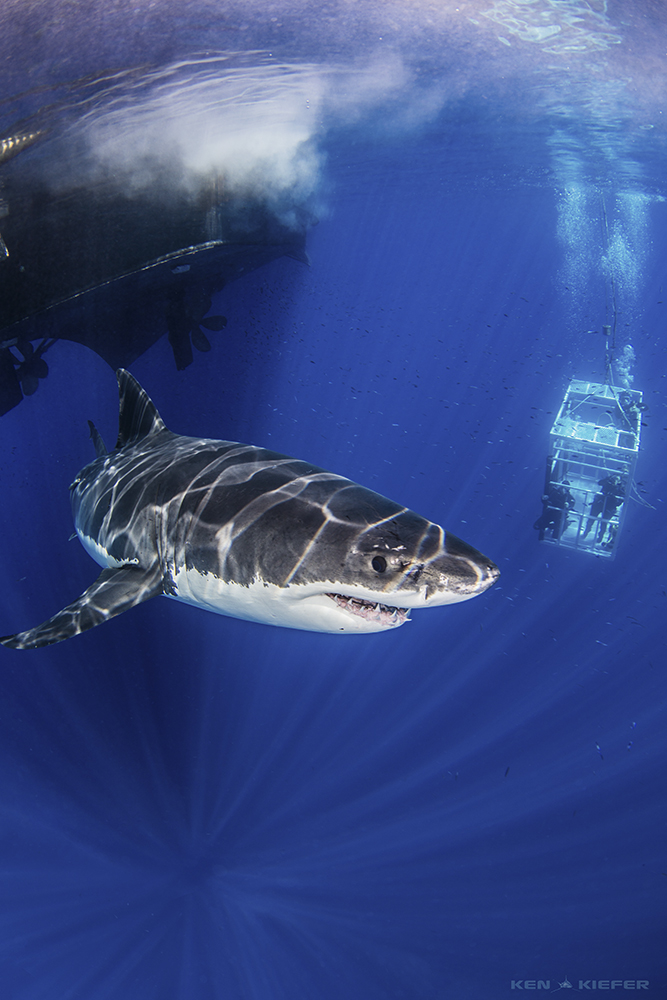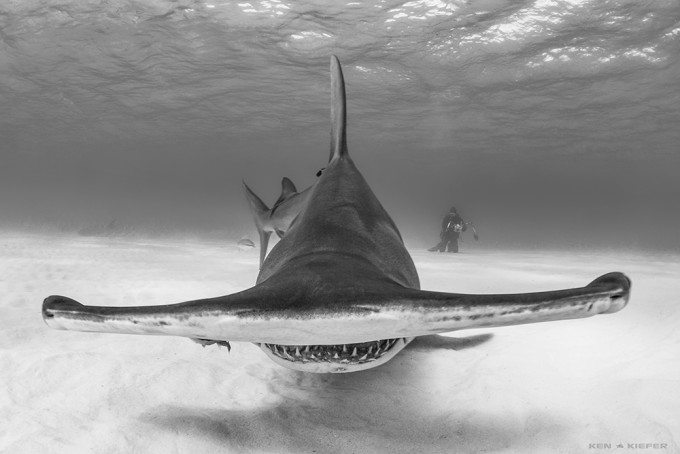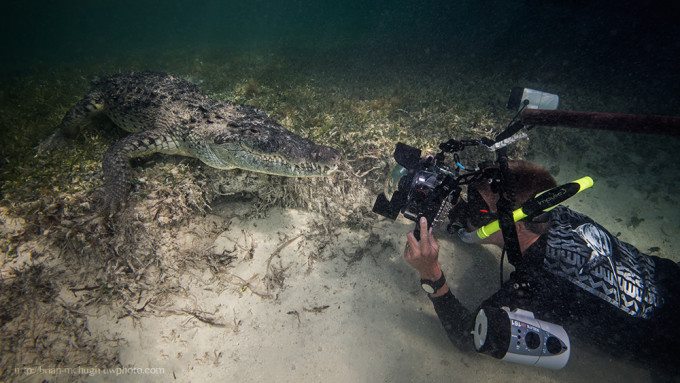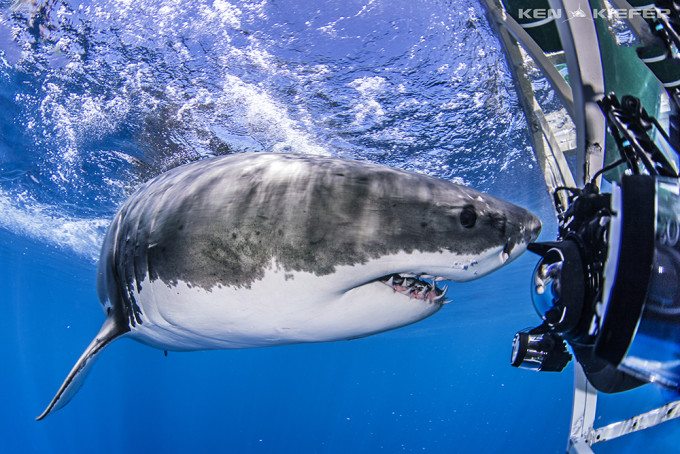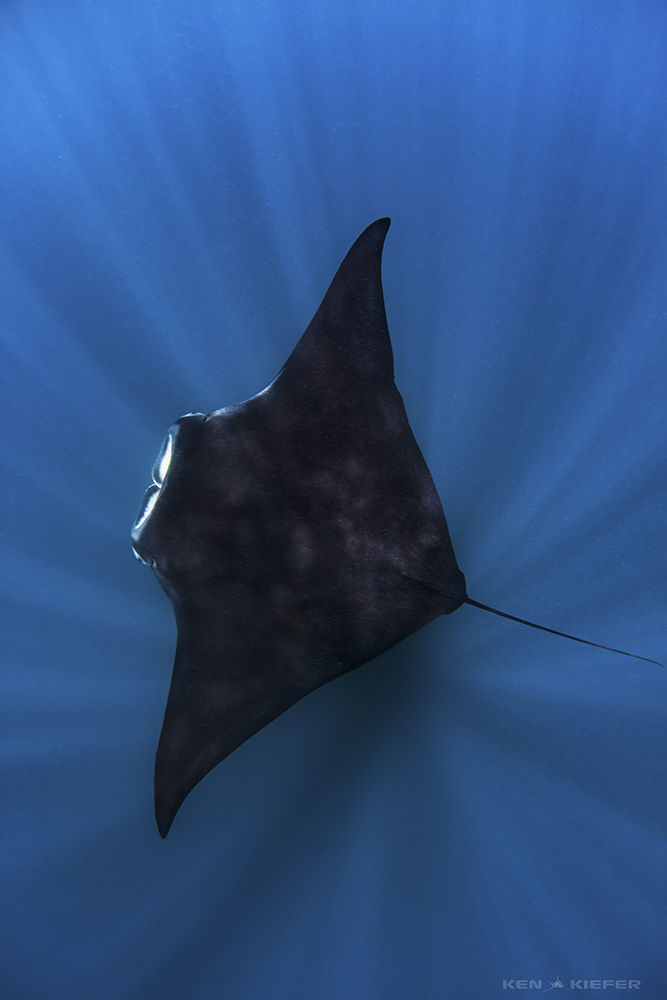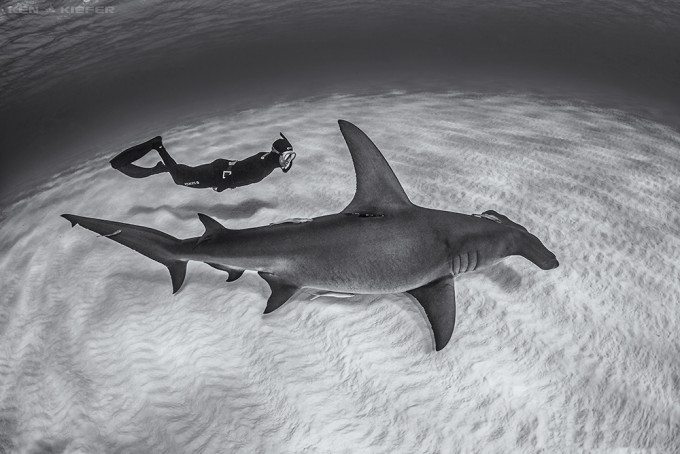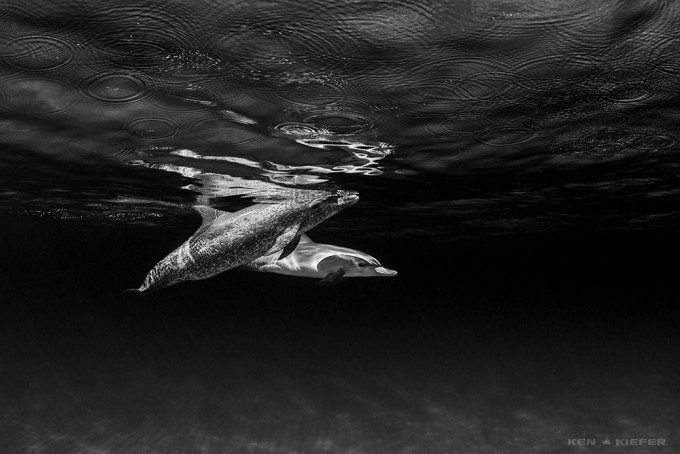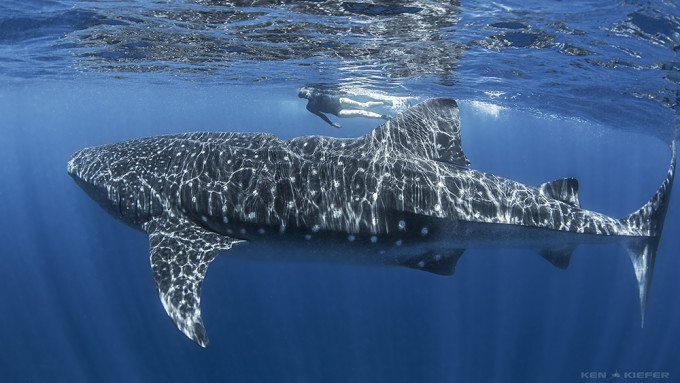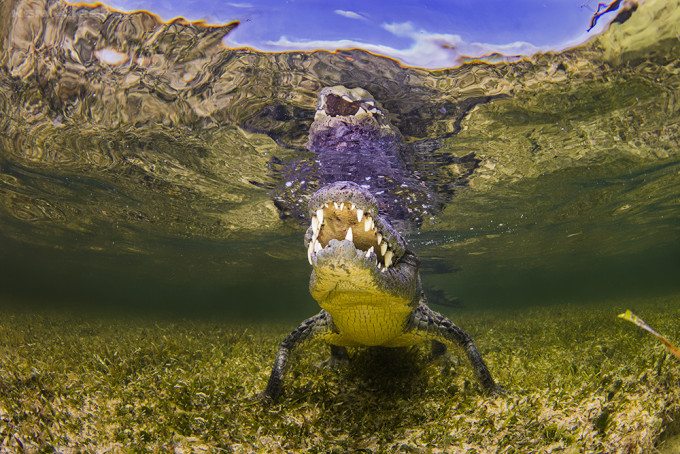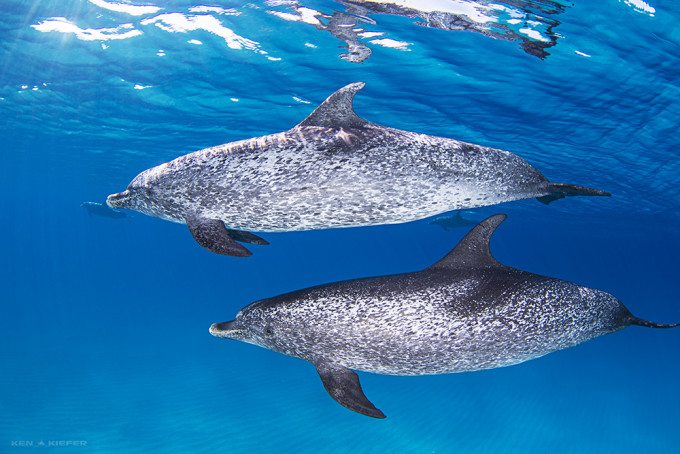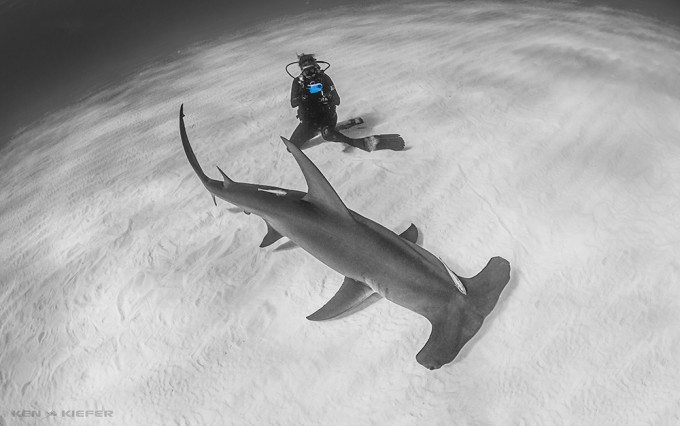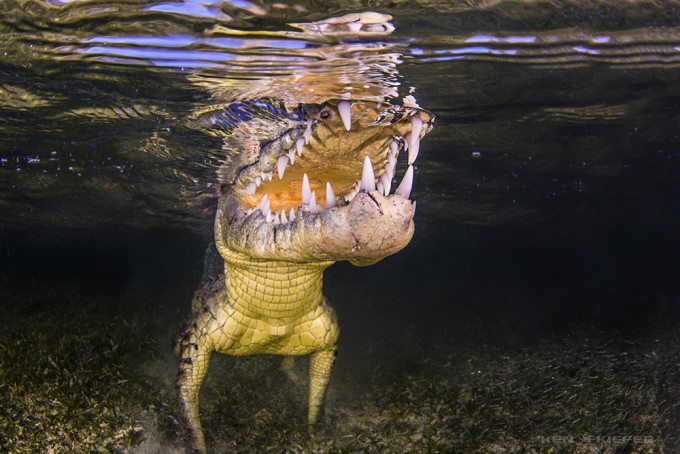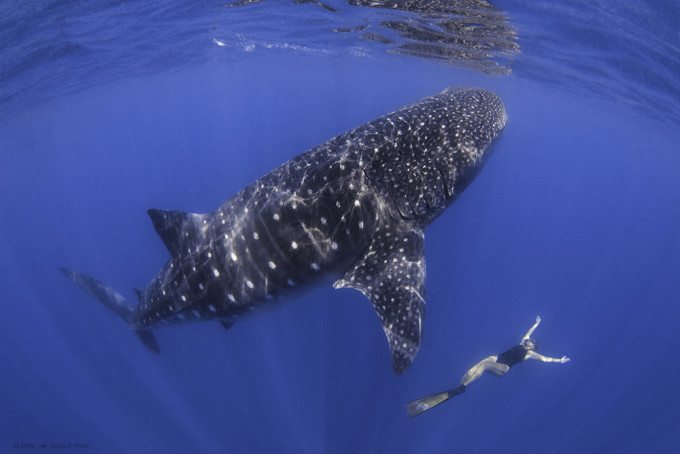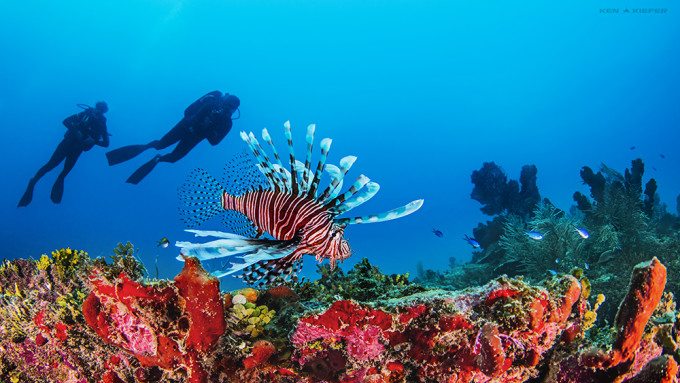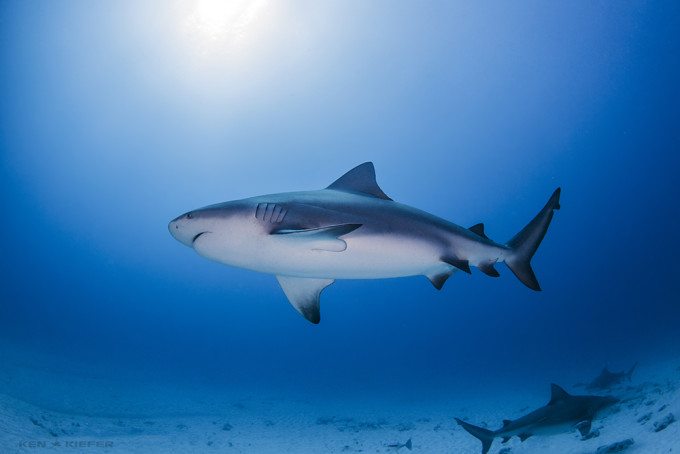All images by Ken Kiefer. Used with permission.
When it comes photographing underwater, it goes without saying that Ken Kiefer is an expert. He’s well know for his underwater fashion photography–which we previously profiled him for. But what Ken isn’t telling us is that he’s also a certified badass. You see, Ken has loved sharks since he was five years old, and he’s also had a lifelong love of photography. He’ll be photographing gorgeous models underwater one minute and then warming up to some of the most dangerous predators in the sea the next.
We talked to Ken about how he goes about photographing some of the biggest fish in the sea.
Phoblographer: Jumping in the water with sharks is scary, so what do you do to ensure that you stay calm and approaching the big fish?
Ken: Personally, I’ve never been scared with big animals in the water. I can understand why the majority of people would be, based on media portrayals of sharks as basically heat seeking missles just waiting for humans to stick their feet in so they could bite them off. Doing thorough research before attempting to dive with any predator is a must. Understanding as much as possible about sharks – their body language, eating habits, etc. – minimizes any risk of an accident. Staying calm, both with your mind and body movements is critical to keep the sharks calm as well.
When you are calm and composed, you are just another large predator in the water to them. They are curious about you, and will approach out of interest. What you don’t want to do is have a nervous, agitated demeanor and flap your arms and legs around, because that resembles something they might want to eat.
Phoblographer: You’ve photographed other big underwater creatures too like saltwater crocodiles; what are your favorite to photograph and why?
Ken: Sharks have been my favorite animal since I was about 5 years old. They remain my favorite today, but I do really enjoy other large predators. Sharks just have a mystique and grace about them that fascinates me. As photography subjects, they present a multitude of angles and attitudes that I never tire of. Showing my peaceful pictures of sharks to others, especially children, really allows me to help counteract the overhyped drama presented in movies and media by showing more of the truth.
Phoblographer: When it comes to technicalities, what are some things that are essential to remember when it comes to capturing underwater wildlife?
Ken: One of the most important things to keep in mind with large animals underwater is to be very familiar with your equipment. You have to constantly keep your eye on the animal and can’t be playing around with settings. Before you enter the water, you should have a general idea of what settings you will be wanting and then do quick adjustments when a safe opportunity arises. Underwater shooting is very gear intensive with the housings, zoom gears, dome ports and strobes, so it’s necessary to establish a routine for assembly as well as testing water integrity before arriving at the dive location. Also, interactions are always hit or miss with most of these animals, and you don’t ever know how many shots you may get. It’s a good idea to have really large memory cards since changing them requires taking the underwater housing apart.


